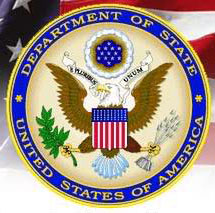 by Jorge Heine
by Jorge Heine
The initial trickle of evidence about the many illegal ways in which Washington pursued its counter-terrorist offensive from 2001 to 2008, first exposed by the pictures from Abu Ghraib in 2004, has turned into a veritable flood.
Not just torture (and overall prisoner mistreatment) but large-scale, domestic warrantless wiretapping, massive use of rendition (the delivery of detainees to foreign governments, in the full knowledge that many of them would be tortured and perhaps killed), extensive surveillance of large numbers of innocent citizens, and a Central Intelligence Agency (CIA) “hit-team programme” launched in 2001 (albeit never put into operation) to kill Al Qaeda leaders, but expressly kept from the knowledge of the relevant congressional oversight committees, are some of the questionable activities that have come to light in the course of the past few years, especially since President Barack Obama took office on January 20.
The Tools for Abuse of Power Remain
Part of the reason Obama was elected with such an overwhelming mandate last November was Abu Ghraib and Guantanamo. However, the inhumane and degrading treatment of detainees turned out to be only the tip of the iceberg of a much vaster pattern of actions designed to sidestep the law and engage in an extraordinary executive power grab, comprising illegal activities that would compromise the rights of not only foreigners abroad but also U.S. citizens at home.
To his credit, announcing the closure of Guantanamo and the abolition of torture practices were among the very first measures taken by Obama after his inauguration.
Yet, what about the rest, that is, the whole panoply of additional tools used by the Bush administration to pursue the “War on Terror” (a term banned in the Obama White House) that according to many lawyers and civil libertarians went against the grain of what the U.S. is all about? That is, illegal abductions, extraordinary renditions, military commission trials and the permanent detention of civilians who cannot be brought to trial for various reasons.
These remain very much in place, albeit with the sorts of caveats that can only be considered somewhat disingenuous (like saying, as the CIA has, that renditions will be continued but only with countries providing guarantees that detainees will not be tortured or abused in any way). The reluctance of the incoming administration to discontinue the military commission trials system used in Guantanamo until now, and its refusal to substitute regular trials in federal court through which a number of terrorists have already been tried and convicted, has been especially disappointing. The same goes for the constitutionally questionable announcement to keep some detainees permanently locked up, without any charges formally filed against them.
More than six months have gone by since the question of a public reckoning of the past misdeeds of the Bush administration was mooted. The President has not changed his position one iota, though he has made some gestures towards greater public accountability — such as allowing the release of the infamous Office of Legal Counsel (OLC) “torture memos” — and backtracked on others — such as the release of photographs of detainees who had been submitted to “enhanced interrogation technique”Â. But the issue refuses to go away.
The Government Stutters as We Wait
The Senate Select Committee on Intelligence is preparing a report on the subject, to be ready by year’s end. The release to the public of the former CIA Inspector General’s report (the “Helgerson report,” after John Helgerson, its author), submitted in 2004, is awaited. The Department of Justice is preparing another report, on the ethics of the legal pronouncements on the torture issue, while another report in is the works on how and why 92 videotapes of detainees being interrogated were destroyed by the CIA.
As often happens with such matters, the issue has landed on the desk of Attorney General Eric Holder, who is considering the possibility of appointing a special prosecutor.
For Holder, a man personally close to Obama, with whom he shares a number of things (both are African-American lawyers, both are the sons of recent immigrants to the U.S. and both are Columbia graduates), this is not easy. From the beginning, he has also been reluctant to buy into the notion that a reckoning with the past is actually needed. But after locking himself up for two days in his office to read through the Helgerson report, he was so shocked that he had second thoughts.
 Apparently, Holder’s idea would be to appoint a prosecutor from inside the department, as opposed to an outside lawyer. The task would be to focus on excesses committed by CIA interrogators, some of whom violated even the very lax and permissive guidelines of the “torture memos” (such as “waterboarding” one detainee 83 times). Obama himself has indicated that interrogators who stayed within the boundaries of the instructions of the OLC (Office of Legal Counsel) memos would not have any difficulties.
Apparently, Holder’s idea would be to appoint a prosecutor from inside the department, as opposed to an outside lawyer. The task would be to focus on excesses committed by CIA interrogators, some of whom violated even the very lax and permissive guidelines of the “torture memos” (such as “waterboarding” one detainee 83 times). Obama himself has indicated that interrogators who stayed within the boundaries of the instructions of the OLC (Office of Legal Counsel) memos would not have any difficulties.
This assumes that the labors of a special prosecutor can be neatly contained and compartmentalized. A number of Presidents, from Richard M. Nixon to George W. Bush, have found out to their chagrin that this is not the case. The appointment of such prosecutors buys time and breathing space for administrations confronting complex, potentially law-breaking situations, but it does not create a “firewall” around them that ensures they stay within specified boundaries.
Not Very Reassuring
The precedents are not reassuring. After the Abu Ghraib scandal broke (famously blamed by then Secretary of Defense Donald Rumsfeld on “a few bad apples”) — when a number of low-ranking men and women were made to pay the price for what were then called “excesses” but now turn out to have been government policy (down to the use of dogs to intimidate detainees) — only one contractor has been convicted for the abuse of those held in detention. From a strictly legal point of view, it turns out to be very difficult to prove that certain boundaries were crossed, given the redefinition of torture undertaken by John Yoo and other lawyers in the Justice Department’s OLC.
However encouraging Holder’s “second thoughts” may be, then, it may be too little, too late.
Interrogation Techniques Used in CIA Detention Camps
- Suffocation by water
- Prolonged stress standing position
- Beatings by use of collar
- Beating and kicking
- Confinement in a box
- Prolonged nudity
- Sleep deprivation
- Exposure to cold temperatures
- Prolonged shackling
- Threats of ill treatment to the detainee and to his family
- Forced shaving of head and beard
- Deprivation/restriction in the provision of solid food (for three days and up to one month after arrest). Φ
Jorge Heine wrote this piece for India’s national magazine The Hindu Volume 26 Issue 19 Sep. 12-25 2009.

1 comment for “Confronting an Evil Past”